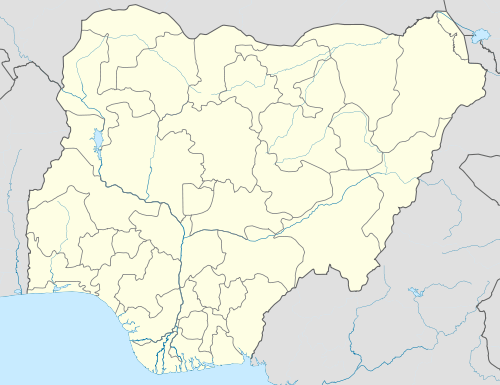Lapai Emirate
| Lapai | |
|---|---|
| Emirate | |
 Lapai Location in Nigeria | |
| Coordinates: 8°49′N 6°41′E / 8.817°N 6.683°ECoordinates: 8°49′N 6°41′E / 8.817°N 6.683°E | |
| Country |
|
| State | Niger State |
The Lapai Emirate, today in Nigeria, is a traditional state that lies near the Gurara River, a tributary to the Niger River, and was originally inhabited by the Gbari people, covering roughly the same area as the modern Lapai local government area.
In the 1790s the Nupe Kingdom was a rising power in the region and had taken Lapai from Oyo. However, with the onslaught of the Fulani Jihad their lands, including Lapai, were conquered by the Sokoto Caliphate.[1] The people of the region became subject to the Hausa kingdom of Zazzau. After 1804 they came under the Fulani emirate of Zaria, part of the realm of the emir of Gwandu. The Lapai emirate was separated from the emirates of Zaria and Agaie in 1825.[2] The emirate was founded in 1828 when Mallam Baba sent his Lieutenant Daudu Muza to subjugate the area. Daudu was successful, but kept the land for himself.[3] The emirate remained a tributary to the Gwandu emirate until 1903, when the British took control.[4]
Rulers
The emirate remains in existence, although it was subject first to British colonial rule and later to civilian or military rule of the independent state of Nigeria. Emirs were:[5]
- Da'udu Maza dan Jaura (1825 - 1832)
- Yamuza dan Jaura (1832 - 1835)
- Baji dan Jaura (1835 - 1838)
- Jantabu dan Jaura (1838 - 1874)
- `Atiqu dan Jantabu (1874 - 1875)
- Bawa dan Jantabu (1875 - 1893)
- `Abd al-Qadiri dan (1893 - 1907)
- Ibrahim dan Jantabu (1907 - 1923)
- `Aliyu Gana dan `Abd al-Qadiri (1923 - Apr 1937)
- `Umaru dan Ibrahim (1937 - Nov 1954)
- Muhammadu Kobo dan `Aliyu Gana (1954 - 13 Jun 2002)
- Umaru Bago Tafida (10 Aug 2002)
References
- ↑ Toyin Falola, Matthew M. Heaton (2008). A history of Nigeria. Cambridge University Press. p. 75. ISBN 0-521-68157-X.
- ↑ "Agaie". Encyclopædia Britannica. Retrieved 2010-09-01.
- ↑ Anthony Hamilton Millard Kirk-Greene (1972). Gazetteers of the Northern Provinces of Nigeria: The Central Kingdoms: Kontagora, Nassarawa, Nupe, Ilorin. Routledge. p. 38. ISBN 0-7146-2935-9.
- ↑ "Gwandu". Kingdoms of Nigeria. Retrieved 2010-09-01.
- ↑ "Traditional States of Nigeria". World Statesmen.com. Retrieved 2010-09-01.